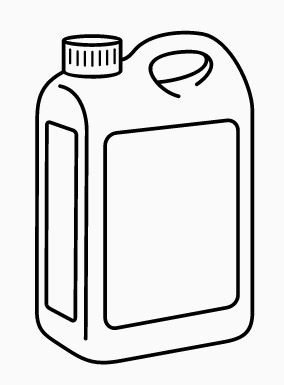Method Statement for Concreting
Method statement informs about materials and technology used for construction, among stakeholders
Method statement for concreting operations shall address the following aspects:
- Designated/Designed Mix Proportion
- Production Method
- Lifting & Leading Scenario
- Placement Method
- Quality Assurance Procedures
- Arrangements of power and fuel stand-by
Designated/Designed Mix Proportions
- Design mix concrete is identified by the grade of concrete. Nominal mix concrete is designated directly by mix proportions.
- Details of mix proportions as designed, approved and verified by laboratory tests. This is not required for nominal mix.
- Details of approved source of aggregates and brands of cement and other admixtures, if any
Method of Production
Remote-batched Transit-mixed method is by far, most common in concrete production. It is used for both design and nominal mix. The method shall be characterized by
- Location and capacity of batching plant
- Distance and duration of transit
- Number of transit trucks to be employed and expected arrival time interval
Site-Mixed concrete is predominantly employed on small concreting jobs. It is characterized by
- Deployment of mixer machine
- Deployment of site batcher if any. Site batchers are not used in volumetric nominal mix.
- Deployment of loader or manpower for loading aggregates and cement to mixer (or batcher, as applicable)
Lifting & Leading scenarios
When concrete is associated with a lift (more likely than not) or lead, in addition to its haulage from batching plant to site, the same shall be considered as a separate deployment. Following different scenarios can be identified:
Manual lifting by relay transfer:
- The total distance of lead/lift
- Number of unskilled helpers required for a relay transfer
- Any scaffolds or access ladders required for transfer
Concrete Line Pumping:
- Pump Capacity
- Length/number of tremie pipes
- Arrangements of control of tremie choking
Concrete Boom Pumping:
- Boom pump capacity and boom length
Hoist/Tower Crane:
- Mobilization of hoist/crane
- Manpower required to move material to and from hoist/crane
Method of Placement
Simplest form of concrete placement occurs in cases such as piling concrete, where concrete is directly tipped off from transit mixer or carried on barrows from site-mixer to point of discharge.
Incrementally, cases such as columns, footings, walls and other cases with geometry confined by formwork on all directions, concreting is also associated with vibration, in addition to discharge. Vibration is achieved most commonly by internal needle vibrators, and is characterized by the type and number of vibrators.
On suspended slabs and mass concrete applications, manpower is required for levelling of concrete, including levling guages, strings and control markers. Occasionally this may be associated with leveling survey instruments.
Other cases of concreting activities not mentioned here includes shotcrete, roller compacted concrete, mass concrete, micro-concrete etc. Leading or lifting scenarios, if any shall be accounted separately as a work apart from concrete composition.
A special case of application is placement of screeding concrete, where concrete is laid on grade or flat surfaces. Two methods are commonly employed for screed concrete:
- Screed Vibrator: In this conventional method, concrete grade slab is levelled on grade with a screed vibrator that runs on prefixed rail channels. The rail channels are fixed on the grade after placing the reinforcements, such that concrete can be poured in alternate bays at a time. The channels act as the guage that controls the thickness of concrete. The screed vibrator compacts the concrete and is subsequently followed by removal of excess water using vacuum dewatering. The floor surface is then polished to required surface finish using a power trowel, with required finishing tools. The remaining alternate bays are poured in the next session, leaving a construction joints with the previously laid alternate bays.
- Laser-controlled screeding machine: Laser controlled screeding machine does not require channels rails or guages. The machine is capable of controlling the level of concrete grade slab to reasonable thickness using laser beams. Screeding is followed by vacuum dewatering and power trowel based on the requirement of the project. Vacuum dewatering is now being progressively replaced by use of surface hardening additives.
Quality Assurance Mobilizations
Mobilizations required for quality assurance for concrete applications are as follows:
- Batching reports, where applicable
- Sampling cubes: Number of cube moulds at origin and site
- Slump cone and workability testing apparatus
- Level guages and instruments
- Cube compression testing machines
“The content presented above is the sole property of Adept Algorithms and shall not be reproduced in part or whole without prior permission”
Post a Comment
You must be logged in to post a comment.









